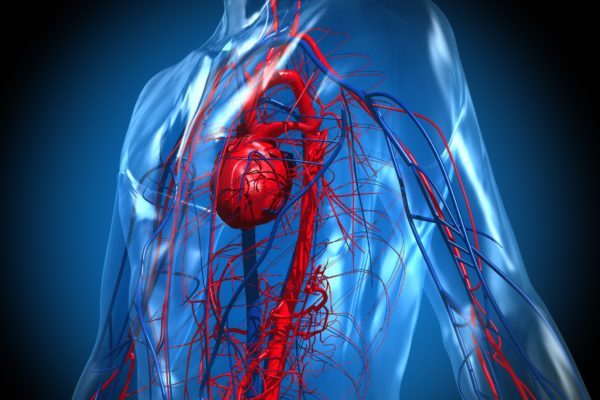Leukaemia is the collective name for several types of bone marrow cancer and involves the abnormal growth of white blood cells. The bone marrow produces many types of white blood cells, including leukocytes. These cells prevent and fight infections and are necessary for a healthy immune system. White blood cells originate in the bone marrow, where they mature into full grown blood cells before they enter the blood stream. Because of this, leukaemia is also known as blood cancer or bone marrow cancer. Leukaemia, like all other cancers, is not a contagious disease.
The bone marrow is a soft tissue that is located in the center of the bones. It contains haematopoietic stem cells which are blood-forming cells. Stem cells are immature cells that can turn into a number of different types of cells. Haematopoietic stem cells in the bone marrow give rise to two main families of cells: myeloid and lymphoid lineages. These include monocytes, macrophages, neutrophils, basophils, eosinophils, erythrocytes, dendritic cells, and megakaryocytes or platelets, as well as T cells, B cells, and natural killer cells. Stem cells constantly divide and produce new cells. Some new cells remain as stem cells and others go through a series of maturing stages before becoming formed, or mature, blood cells. Stem cells rapidly multiply to make millions of blood cells each day. Only mature blood cells are able to enter the bloodstream.
Leukaemia begins when the bone marrow contains an unusually high amount of aberrant leukoctyes, known as blast cells. These cells do not mature into adult normal cells, and are non-functional as a result. Eventually, they supplant the normal white and red blood cells and platelets in the bone marrow, lymphatic system and in the blood causing a lack of healthy blood cells in the body. This has a direct effect on the body in various ways:
Due to the lack of white blood cells the immune system’s ability to protect the body against pathogens drastically decreases. The lack of red blood cells means that organs receive insufficient oxygen and can no longer function properly. The lack of blood platelets disturbs the blood clotting process which makes the body more vulnerable to bleeding and bruising. These effects make that leukemia can result in a fatal outcome without proper treatment.
A distinction is made between different types of leukaemias. The first division is made based upon the rate of increase of aberrant blood cells which may be acute or chronic. The diseases are then subdivided according to which blood cells are affected, which may be lymphoblastic or myeloid. Determination of the right kind of leukaemia is important for treatment and disease outcomes.
Acute leukaemia is characterised by a rapid increase in the number of immature blood cells. The crowding that results from such cells makes the bone marrow unable to produce healthy blood cells. Immediate treatment is required in acute leukaemia because of the rapid progression and accumulation of the malignant cells, which then spill over into the bloodstream and spread to other organs of the body. Acute forms of leukaemia are the most common forms of leukemia in children.
Chronic leukaemia is characterised by the excessive buildup of relatively mature, but still abnormal, white blood cells. Typically taking months or years to progress, the cells are produced at a much higher rate than normal, resulting in many abnormal white blood cells. Chronic forms are sometimes monitored for some time before treatment to ensure maximum effectiveness of therapy. Chronic leukaemia mostly occurs in older people, but can occur in any age group.
The most common forms of acute and chronic leukemia are:
In lymphoblastic or lymphocytic leukaemias, the change takes place in a type of marrow cell that normally goes on to form a specific white blood cell, such as the lymphocyte. These are infection-fighting immune system cells. Most lymphocytic leukaemias involve a specific subtype of lymphocyte, the B cell.
In myeloid or myelogenous leukaemias, the cancerous change takes place in a type of marrow cell that normally goes on to form red blood cells, some other types of white cells, and platelets.
Leukaemia symptoms vary, depending on the type of leukaemia. Many types of leukaemia produce no obvious symptoms in the early stages. Common leukaemia signs and symptoms include:
Leukaemia is caused by an error (mutation) in the DNA of a stem cell. This results in aberrant stem cells that have lost their ability to multiply in an orderly fashion, resulting in the overgrowth of these aberrant cells.
People may be at greater risk at developing leukaemia when exposed to external factors such as radiation, smoking, certain viruses and chemicals. Though leukemia might be inherited, it is not usual. It appears the disease is more common in some families as well as people with certain congenital disorders, including Down syndrome.
Because many types of leukaemia show no obvious symptoms early in the disease, leukaemia may be diagnosed incidentally during a physical exam or as a result of routine blood testing. When leukaemia is suspected the following diagnostic exams may be performed:
Treatment is specific to the classification of the patient’s leukaemia, however, general treatment options include:
For more information on treatment protocols, please refer to the page specific to the type of leukaemia in question.





Notifications